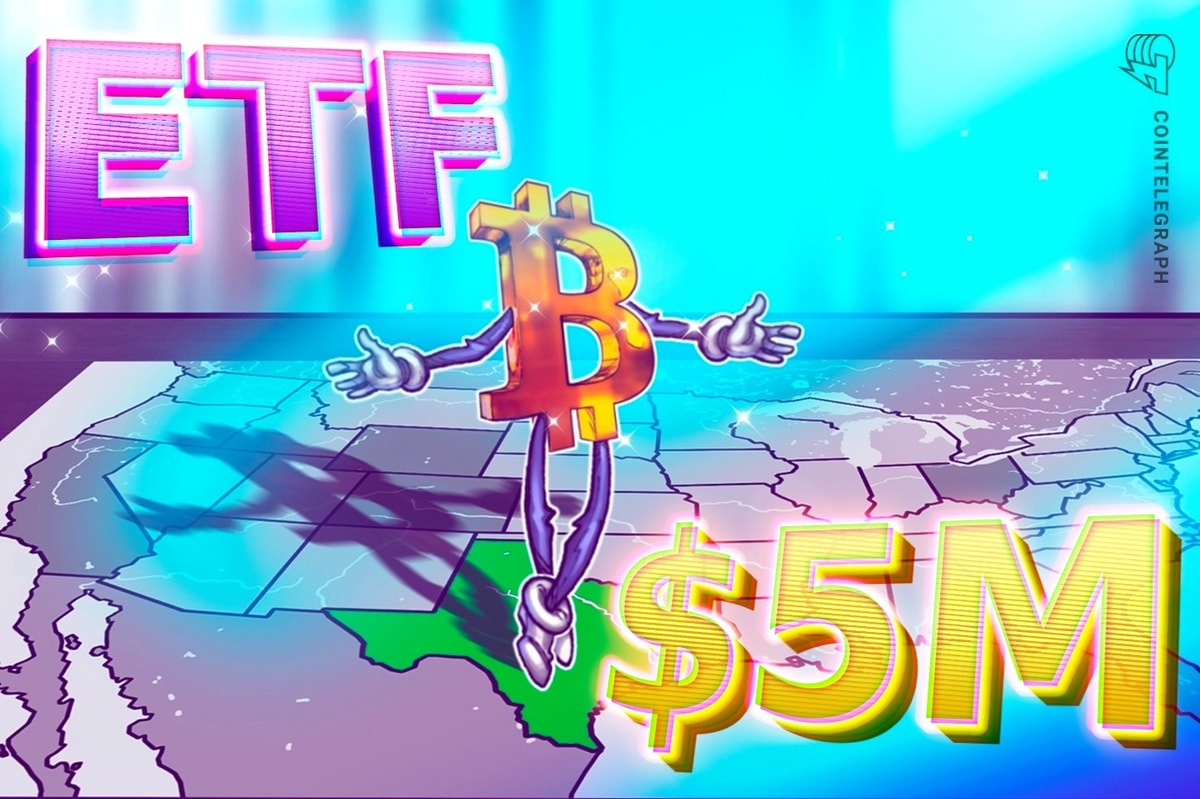Munis weaker, UST yields rise after CPI report
10 min read
Municipals were weaker Tuesday as U.S. Treasury yields rose and equities ended mixed after inflation data showed tariff concerns remain while completely erasing any possibility of a Federal Reserve rate cut in July.
The two-year muni-UST ratio Tuesday was at 62%, the five-year at 63%, the 10-year at 73% and the 30-year at 92%, according to Municipal Market Data’s 3 p.m. ET read. ICE Data Services had the two-year at 62%, the five-year at 66%, the 10-year at 73% and the 30-year at 93% at a 4 p.m. read.
The muni market remains “well bid,” said Anders S. Persson, Nuveen’s chief investment officer for global fixed income, and Daniel J. Close, Nuveen’s head of municipals.
The July 1 reinvestment money topped $50 billion, showing the continued demand for bonds, they said.
Supply also remains heavy, keeping supply and demand in “equilibrium,” Persson and Close said.
Even more supply is on the horizon, said Matt Fabian, a partner at Municipal Market Analytics. “If more upward pressure is coming for the long end, it makes sense for issuers and their underwriters to keep the calendar active until yearend and beyond.”
Issuance year-to-date is over $300 billion, and many firms have revised their projections upward, including MMA, which now estimates issuance in 2025 at $581 billion.
There is a “good case for yields trending higher over the medium term,” Fabian said. But, “whether the larger pull comes from USTs or municipals (via excess supply and lower credit quality) will determine if long ratios can cheapen enough to draw in crossovers.”
A rate cut from the Fed this year is growing more likely, Fabian said, “giving some validity to front half municipal demand.”
“But these being mostly retail customers putting away the bonds, nominals may not be able to sink too much further; meaning that a Fed cut, if it happens, could drive underperformance up front,” he said. “At the 10-year spot, some buyers are no longer seeing offered prices as cheap: potentially the start of that pushback.”
Currently, at “+200 basis points, 2s/30s term spreads are at their steepest since May 2017 when the two-year yield was less than half its current value,” he said. “In fact, the last time both the 2s/30s spread and the two-year yield were simultaneously at their current levels (ish), it was 2008.”
That steepening puts the market “in a very atypical situation,” Fabian said, as it suggests “big bets on Fed action, inflation, or the economy are riskier than usual.”
There is also systemic volatility brought about by the uncertainty surrounding tariffs and trade policy, “federal retrenchment including cuts to the safety net (to be picked up by states?), hurricane season, and any number of other factors,” Fabian said.
MMA’s sector outlooks for the second half of the year are mostly unchanged because most have performed well thus far, Fabian said. But, two sectors now carry worse outlooks, he said: hospitals, because of federal cuts to Medicare and Medicaid, and industrial development bonds because of an uptick in defaults.
In the primary market Tuesday, Morgan Stanley priced for the California Community Choice Financing Authority (A2///) $1.005 million of term-rate green clean energy project revenue bonds, Series 2025D, with 5s of 7/2030 at 3.96% and 5s of 2034 at 4.67%, callable 4/1/2034.
Raymond James priced for the New Hampshire Municipal Bond Bank (Aa2/AA+//) $231.335 million of GOs with 5s of 8/2026 at 2.54%, 5s of 2030 at 2.66%, 5s of 2035 at 3.45%, 5s of 2040 at 4.15%, 5s of 2045 at 4.63%, 5s of 2050 at 4.80% and 4.75s of 2054 at 5.01%, callable 8/15/2034.
BOK Financial priced for the Irving Independent School District, Texas, (Aaa/AAA//) $222.155 million PSF-backed unlimited tax school building bonds, with 5s of 2/2028 at 2.59%, 5s of 2030 at 2.74%, 5s of 2035 at 3.45%, 5s of 2040 at 4.21% and 4.5s of 2045 at 4.79%, callable 2/15/2035.
Morgan Stanley priced for the Volusia County Educational Facilities Authority (A1//AA-/) $185 million of Embry-Riddle Aeronautical University project educational facilities revenue bonds, with 5s of 10/2028 at 2.70%, 5s of 2030 at 2.86%, 5s of 2035 at 3.59% and 5s of 2040 at 4.30%, callable 10/15/2034.
Baird priced for the Red Oak Independent School District, Texas, (Aaa///) $171.06 million PSF-backed unlimited tax school building bonds, with 5s of 2/2027 at 2.60%, 5s of 2030 at 2.72%, 5s of 2035 at 3.49%, 5s of 2040 at 4.21%, 5s of 2045 at 4.68%, 4.75s of 2050 at 5.03% and 5.25s of 2055 at 4.92%, callable 2/15/2035.
In the competitive market, Glendale, California, (Aa3//A+/) sold $168.235 million electric revenue bonds to Wells Fargo, with 5s of 2/2026 at 2.31%, 5s of 2030 at 2.40%, 5s of 2035 at 3.06%, 5s of 2040 at 3.86%, 5s of 2045 at 4.48%, 5s of 2049 at 4.73% and 5s of 2055 at 4.87%, callable 2/1/2035.
Rutherford County, Tennessee, (Aaa/AAA/AAA/) sold $108 million GO school bonds, Series 2025B, to J.P. Morgan, with 5s of 4/2026 at 2.51%, 5s of 2030 at 2.60%, 5s of 2035 at 3.35%, 5s of 2039 at 3.88% and 4.5s of 2045 at 4.60%, callable 4/1/2035.
The Longview Independent School District, Texas, (Aaa//AAA/) sold $101.2 million PSF-backed unlimited tax school building bonds to J.P. Morgan, with 5s of 2/2026 at 2.58%, 5s of 2030 at 2.72%, 5s of 2035 at 3.46%, 5s of 2040 at 4.24%, 5s of 2045 at 4.73% and 5s of 2049 at 4.90%, callable 8/15/2035.
AAA scales
MMD’s scale was cut up to five basis points: The one-year was at 2.46% (unch) and 2.46% (unch) in two years. The five-year was at 2.55% (unch), the 10-year at 3.26% (+3) and the 30-year at 4.62% (+5) at 3 p.m.
The ICE AAA yield curve was cut two to three basis points: 2.46% (+2) in 2026 and 2.41% (+3) in 2027. The five-year was at 2.63% (+2), the 10-year was at 3.24% (+3) and the 30-year was at 4.60% (+3) at 4 p.m.
The S&P Global Market Intelligence municipal curve was cut up to five basis points: The one-year was at 2.46% (unch) in 2025 and 2.47% (unch) in 2026. The five-year was at 2.55% (unch), the 10-year was at 3.26% (+3) and the 30-year yield was at 4.60% (+5) at 4 p.m.
Bloomberg BVAL saw large cuts outside of five years: 2.47% (-1) in 2025 and 2.49% (-1) in 2026. The five-year at 2.60% (-1), the 10-year at 3.25% (+8) and the 30-year at 4.62% (+6) at 4 p.m.
Treasuries saw losses.
The two-year UST was yielding 3.953% (+5), the three-year was at 3.929% (+5), the five-year at 4.048% (+6), the 10-year at 4.484% (+5), the 20-year at 5.016% (+4) and the 30-year at 5.012% (+3) just before the close.
CPI
As always, economists had disparate views about the consumer price index, with none expecting a July rate cut. And the tariff questions remain unanswered.
“This was a good report and overall, in line with expectations,” said Scott Wren, senior global market strategist at Wells Fargo Investment Institute. While year-over-year numbers were up from last month, he said, it’s meaningful that the month-over-month headline number has come in below expectations for five consecutive months.
Although the data “showed some early signs of tariff impact,” Kay Haigh, global co-head of fixed income and liquidity solutions at Goldman Sachs Asset Management, said “on the whole underlying inflation remained muted.”
Price pressures are expected to grow this summer “and the July and August CPI reports will be important hurdles to clear,” she said.
If inflation data “continue to prove benign, the path remains open to a resumption of the Fed’s easing cycle in the autumn,” Haigh said.
While inflation was “softer than expected for the fifth month in a row,” Seema Shah, chief global strategist at Principal Asset Management, noted, “with increases in categories like household furnishings, recreation and apparel, import levies are slowly filtering through to core goods prices.”
Since tariffs “take several months to feed through to inflation data,” she said, “the significant front loading of imports implies that few goods may have been subject to tariffs yet. And while any tariff-induced boost to inflation is likely to be short-lived, with higher tariffs being announced, it would be wise for the Fed to remain on the sidelines for a few more months at least.”
Olu Sonola, head of U.S. economic research at Fitch Ratings, agreed. “There is a trickle of what is likely tariff-induced inflation in some categories, particularly household appliances and furnishings,” he said. “This trickle is likely to gain momentum in the coming months. A July cut is clearly off the table, but the Fed will view this report as the first of three that will shape the decision on a possible rate cut in September.”
The report “did nothing to change” the belief that there would be no July rate cut, “but put the focus squarely on September,” said Jay Woods, chief global strategist at Freedom Capital Markets.
“Clearly inflation remains sticky, but it is far from changing course,” he said. “The continued tariff uncertainty remains just that — uncertain.”
If inflation data continues to fall in line with projections, the uncertainty about tariffs will not matter, “and thus a cut in September” will be warranted, Woods said.
The summer remains the key to inflation expectations, said Richard Flax, chief investment officer at Moneyfarm. “So far, we haven’t really seen a material impact from higher tariffs on consumer prices. But with the year-over-year headline number rising to 2.7% in June from 2.4% in May, “a rate cut in September is still up for debate. Beyond the macro data, a key question remains — how resilient is the Federal Reserve in maintaining its independence amid growing federal pressure?”
“This subconsensus core CPI figure may give President [Donald] Trump an excuse to launch another salvo at Jerome Powell, but we always suspected it would be three months from April/May before the tariffs show up in force,” said James Knightley, chief international economist at ING.
But “the July, August and September CPI reports” have the potential to show 0.4% or higher month-over-month gains in inflation, he said.
While “Chris Waller and Michelle Bowman suggested they could vote in favor of a cut as soon as the July FOMC meeting,” Knightley said, “the rest of the committee feels they have time to wait, especially in light of the recent firmer-than-expected June jobs report.”
“Tariffs continue to boost some product prices, but CPI inflation was modest in June, especially in the core,” said FHN Financial Chief Economist Chris Low. “The wait-and-see case for Fed policy is weakening, especially given the weakening job market.”
He also pointed to the five months “since tariffs were imposed on our three biggest trade partners without tariff-related inflation fireworks.”
While the wait-and-see faction “at the Fed is likely to dig in and carry the day again at the meeting at the end of this month,” Low said, “at this rate, the result could be pressure for a bigger cut in September, just like last year.”
The report “is a step in the wrong direction,” said BMO Chief U.S. Economist Scott Anderson. “More signs of tariff pass-through are starting to appear, while services and housing inflation remain too hot for comfort. Today’s report keeps the tariff inflation debate going for at least another month and the Fed on hold until it receives more clarity and comfort on how tariffs are feeding through the economy’s supply chains.”
While higher inflation this summer “would represent a reversal of the progress” made, Wells Fargo Securities senior economists Sarah House and Michael Pugliese and economist Nicole Cervi said, “But, ‘just’ 3% core inflation would be a better outcome than some of the worst-case scenarios that policymakers may have feared back in the spring.”
Combined “with the gradual softening in the labor market that we expect to continue in the second half of the year,” they said, the FOMC remains “on track to cut the federal funds rate by 25 bps at its September meeting.”
If tariffs result in “a one-off, modest increase in inflation this year,” which is their base case, “moving monetary policy back toward a neutral stance by the turn of the year strikes us as a reasonable approach.”
While there is some evidence of tariff-related price pressures, Payden & Rygel Chief Economist Jeffrey Cleveland noted, “We’re seeing less tariff impact than the hawks have been forecasting.”
It’s unclear, he said, what July’s data will show.
“Our inflation view is largely playing out: softer shelter inflation is offsetting the upward pressure generated by goods prices, keeping overall core CPI in check,” Cleveland said. “Once the tariff price pressures fade, core CPI will resume its march toward the 2% target and perhaps end up even a bit below target.”
But, he added, “we suspect that the FOMC will be late to the party once again. We expect rate cuts in September, November and December, bringing the policy rate 75 bps lower by year-end.”
Primary to come
The New York State Transportation Development Corp. (Baa3/NR/BBB-/BBB-) is set to price Wednesday $1.367 billion special facilities revenue bonds (Kennedy Airport New Terminal One Project). Serials, terms. BofA.
Honolulu (/AA+//) is set to price Wednesday $695 million GOs. Serials. BofA.
Salt Lake City (A1/A+/NR/AA) is set to price Thursday $608.6 million airport revenue bonds. Serials, terms. JPMorgan.
The Utah Transit Authority (Aa2/AA+/AA/) is set to price Wednesday $450 million sales tax revenue and refunding bonds. Serials, terms. JPMorgan.
Carrollton-Farmers Branch ISD, Texas, (Aaa/AAA//), is set to price Wednesday $307.9 million PSF-backed unlimited tax school building bonds. Serials. BOK Financial.
The San Jose USD (Aaa/AAA//) is set to price Wednesday $219 million GOs. Serials. Stifel, Nicolaus.
The Wisconsin Public Finance Authority (NR/A/A+/NR) is set to price Wednesday $194.38 million hospital revenue bonds (Renown Regional Medical Center Project). Serials, terms. Barclays.
The Wisconsin Public Finance Authority (NR/NR/NR/NR) is set to price $175 million tax-exempt pooled securities. JPMorgan.
The California Statewide Communities Development Authority is set to price Wednesday $151.98 million Cal-Mortgage Loan insured revenue and refunding bonds (Sequoia Living Project). Ziegler.
The Wisconsin Public Finance Authority is set to price Thursday $150 million municipal certificates (Cuyahoga River Capital Portfolio). HilltopSecurities.
Charlotte, North Carolina, (Aaa/AAA//) is set to price Thursday $145.86 million water and sewer system refunding revenue bonds. Serials. BofA.
The Rhode Island Housing and Mortgage Finance Corp. (Aa1/AA+/NR/NR) is set to price Thursday $133.7 million homeownership opportunity bonds. JPMorgan.
The Ohio Housing Finance Agency (Aa1///) is set to price Thursday $125 million residential mortgage revenue bonds (social bonds). Serials, terms. BofA.
King County Housing Authority, Washington, is set to price Wednesday $102 million pooled housing refunding revenue bonds. Serials, terms. KeyBanc.
Competitive
Rochester, New York, is set to sell $171 million bond anticipation notes Wednesday at 11 a.m., Eastern.
The North Syracuse Central School District, New York, is set to sell $106.637 million bond anticipation notes Thursday at 11 a.m., Eastern.
Wakefield, Massachusetts, is set to sell $106 million GOs Thursday at 11 a.m., Eastern.
Gary Siegel contributed to this report.







